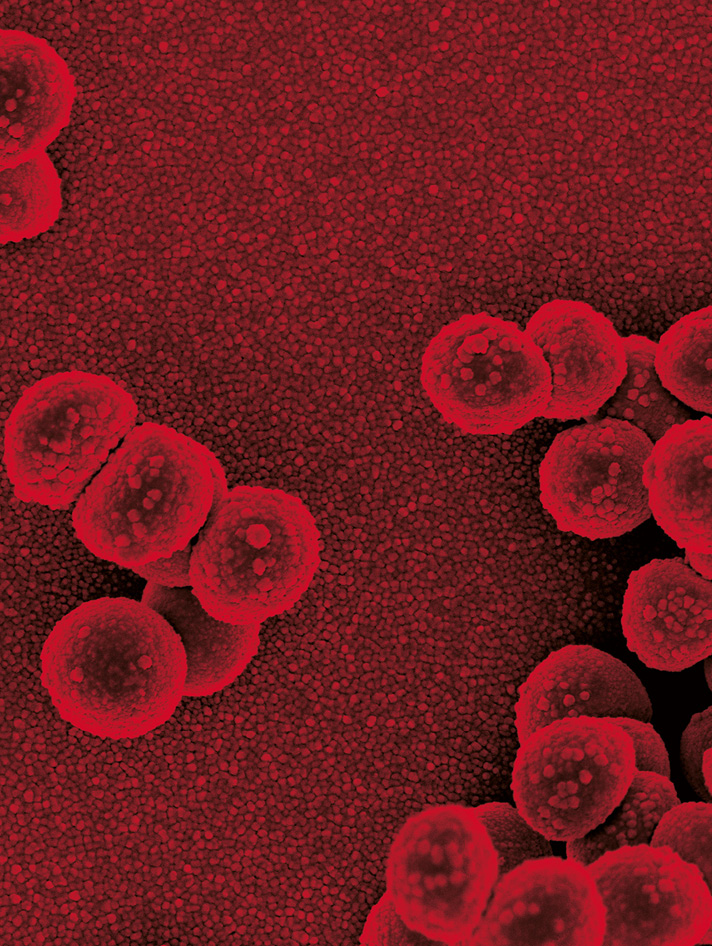Microbiology
Related Links
Need homework and test-taking help in microbiology? These articles can help you understand microorganisms and the causes of infectious diseases. Department of Microbiology. The Department of Microbiology at UT Knoxville is dedicated to providing the quality education, through both teaching and research, necessary to meet the needs of this growing field.
http://www.cellsalive.com
Cells alive!
http://en.wikipedia.org/wiki/Microbiology
Microbiology, Wikipedia

http://highered.mcgraw-hill.com/sites/0072320419/student_view0/interactive_time_line.html
Microbiology: Interactive Time Line, McGraw-Hill Online Learning Center
http://www.maxanim.com/microbiology
Microbiology Animations
http://www.microbeworld.org
Microbeworld: Discover Unseen Life on Earth
http://pathmicro.med.sc.edu/book/welcome.htm
Microbiology and Immunology On-line
Microbiology is the study of microorganisms (also known as microbes), which are unicellular or cell-cluster organisms and infectious agents too small to be seen with the naked eye. This includes eukaryotes (organisms with a nucleus), such as fungi and protists, and prokaryotes (organisms without a nucleus), such as bacteria.
A fundamental understanding of how a cell works has come through the study of microorganisms. But microbiology also is an applied science, helping agriculture, health and medicine and maintenance of the environment, as well as the biotechnology industry. Microbiologists study microbes at the level of the community (ecology and epidemiology), at the level of the cell (cell biology and physiology) and at the level of proteins and genes (molecular biology).
Microorganisms are extremely important in our everyday lives. Some are responsible for a significant proportion of the diseases affecting not only humans, but also plants and animals, while others are vitally important in the maintenance and modification of our environment. Still others play an essential role in industry, where their unique properties have been harnessed in the production of food, beverages and antibiotics. Scientists also have learned how to exploit microorganisms in the field of molecular biology, which makes an enormous impact both industrially and medically. Microbiology also encompasses immunology, the study of the body’s ability to mount defenses against infectious microbes.
Because microbiology, by definition, studies organisms not visible to the naked eye, we can consider late-17th-century Dutch scientist Antony van Leeuwenhoek the father of the discipline. Leeuwenhoek was the first person to describe tiny cells and bacteria, and he invented new methods for grinding and polishing microscope lenses that allowed for curvatures providing magnifications of up to 270 diameters, the best available lenses at that time. But while van Leeuwenhoek is cited as the first microbiologist, the first recorded microbiological observation — the fruiting bodies of molds — was made earlier, in 1665, by English physicist Robert Hooke.
Microbiology Book
Other notable people in the history of science who made fundamental discoveries about microorganisms are 19th-century scientists Louis Pasteur and Robert Koch, who are considered the founders of medical microbiology. Pasteur is most famous for his series of experiments designed to disprove the then-widely held theory of spontaneous generation, which solidified microbiology’s identity as a biological science. Pasteur also designed methods for food preservation (pasteurization) and vaccines against several diseases, such as anthrax, fowl cholera and rabies. Koch is best known for his contributions to the germ theory of disease, proving that specific diseases were caused by specific pathogenic microorganisms. He developed a series of criteria that have become known as Koch’s postulates. Koch was one of the first scientists to focus on the isolation of bacteria in pure culture, resulting in his description of several novel bacteria, including Mycobacterium tuberculosis, the causative agent of tuberculosis.
Finally, some of the most important discoveries affecting public health occurred in the 20th century, such as the discovery of penicillin by Alexander Fleming, which started a rush to find other natural, and eventually synthetic, antibiotics; the development of vital vaccines, including those for polio and yellow fever; and the birth of molecular biology, which happened in the 1940s with the study of bacteria.
Subdisciplines of Microbiology
Bacteriology
This is the study of bacteria.
Environmental Microbiology
This is the study of the function and diversity of microbes in their natural environments.
Microbiology Openstax
Evolutionary Microbiology
This is the study of the evolution of microbes.

Food Microbiology
This is the study of microorganisms causing food spoilage as well as those involved in creating foods such as cheese and beer.
Industrial Microbiology
This is the exploitation of microbes for use in industrial processes, such as industrial fermentation and wastewater treatment. This subdiscipline is linked closely to the biotechnology industry.
Medical (or Clinical) Microbiology
This is the study of the role of microbes in human illness. It includes the study of microbial pathogenesis and epidemiology and is related to the study of disease pathology and immunology.
Microbial Genetics
This is the study of how genes are organized and regulated in microbes in relation to their cellular functions. This subdiscipline is related closely to the field of molecular biology.
Microbial Physiology
This is the study of how the microbial cell functions biochemically. It includes the study of microbial growth, microbial metabolism and microbial cell structure.
Mycology
This is the study of fungi.
Veterinary Microbiology
This is the study of the role in microbes in veterinary medicine.
Virology
This is the study of viruses.
